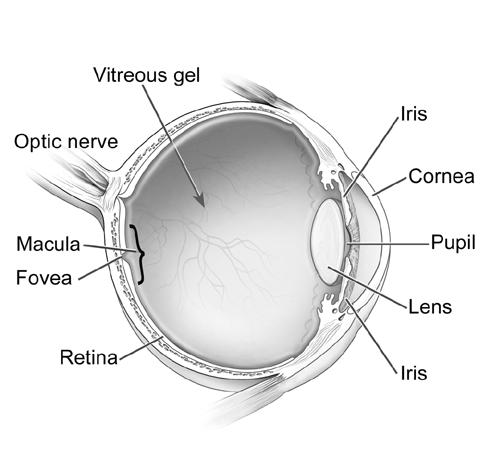Ever wonder how your eye works?

Perhaps the most complex organ in our body, the eye is not succinctly explained. It’s amazing that something so small and as important as the eye, can have so many interacting parts. But the incredible sights seen through the miracle of vision perhaps make it no small wonder at all.
The eye is like a camera. Light comes in through the cornea, a clear cover that is comparable the glass of a camera’s aperture. The pupil regulates the amount of light that enters the eye. The pupil becomes larger or smaller depending on the amount of light in the surrounding area and how much the eye needs to see. The light then enters the retina, which is a series of light-sensitive cells lining the back of the eye. The retina acts as the “memory card” of your eye, responding to the incoming light and sending a record of it to the brain through the optic nerve. Your brain then processes these recordings and images as what we call sight.
In the important duty of sight, your eye does not act alone. Muscles allow the eye to move and expand the field of vision. Veins bring blood to the eye as well as lubricants to keep the eye healthy and functioning. Lastly your eyelids and eyelashes help protect the eye from foreign objects.
All of these parts of the eye create the no small wonder that is our vision.
